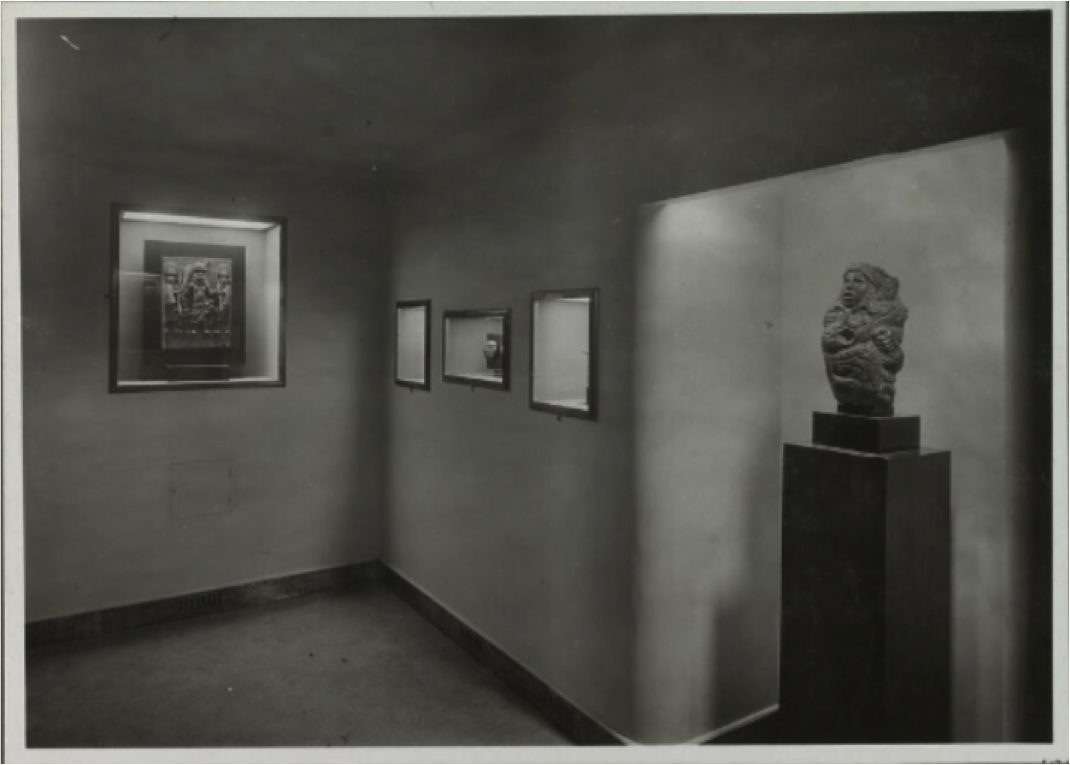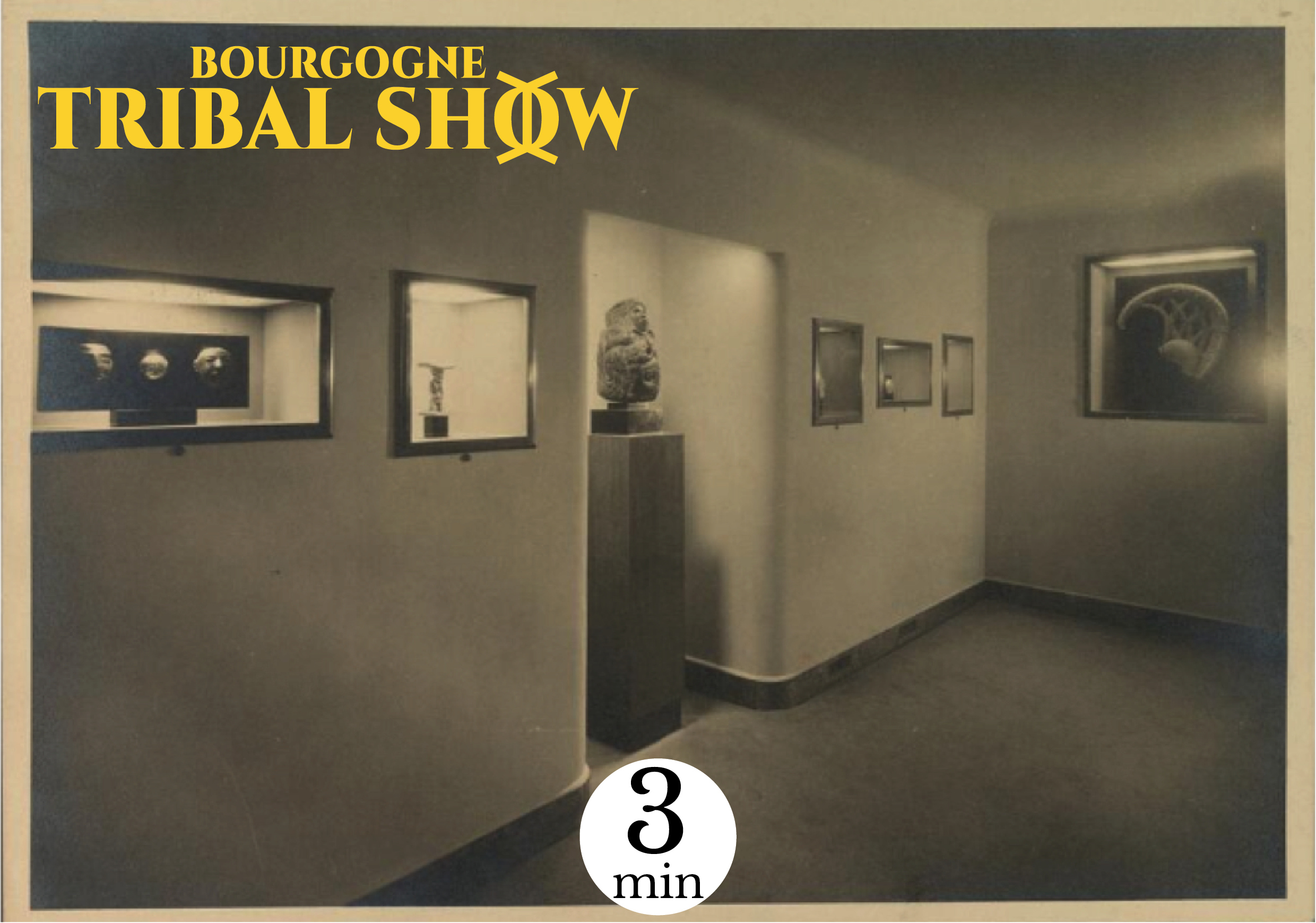* Switch language to english for english version of the article *
This article was first written for the catalogue of the third edition of the Bourgogne Tribal Show, 2018.
Treasure: noun from Latin thesaurus and Greek thêsauros.
A cache of precious objects stored, often hidden, forgotten, then fortuitously invented: discover a treasure.
Goods, products, or objects considered as riches held or produced: the ocean treasures.
A name given to some major works or some major collections: treasures of the French language.
Archeology. In large Greek sanctuaries, a small edifice dedicated by a city or a tyrant and which housed offerings, votive plaques: the treasure of Athenians in Delphi.
History and decorative arts. Place where the archives or the precious objects of aseigniory, of a community, were kept and where those of a church are still kept; these precious objects themselves.
In March 1928, Paul Rivet (1876-1959), an anthropologist of the Americas, was elected as chair of anthropology by the professorial administrators of the Muséum National d’Histoire Naturelle. In the same month, he became director of the Musée d’ethnographie du Trocadéro (MET) and appointed Georges-Henri Rivière (1897-1985), a musician close to avant-garde intellectuals and artists and about to become a brilliant museographer, as the deputy director. Together, the two men launched an intellectual, scientific and setup had changed very little since it had opened in 1882.1 The lack of state funding had prevented the two previous directors’ projects from being achieved.2 But Rivière’s professional and personal networks provided major support through significant private patronage so that very quickly, the renovation could start and be achieved. The scientific programme, which prefigured a “museum-laboratory” mixing research and public display, was led by Rivet while Rivière was entrusted with museographic transformation. This “new and explosive alliance between science and culture”3 gave a second life to the MET.4

Vue de la salle du Trésor au Musée d’ethnographie du Trocadéro, Sage, 1934, tirage sur papier baryté monté sur carton, musée du quai Branly, PP0001382.
On 15 June 1932, two openings took place which gave the public the opportunity to discover significant novelties within the museum. First, the Exhibition of the bronzes and ivories from the Kingdom of Benin5 was the first of many temporary events organised by the museum in order to promote the collecting missions that it organised and to offer a more aesthetical outlook on the objects and cultures it exhibited. This first initiative was partly curated by the art dealer Charles Ratton (1895-1986), a pioneering Parisian art dealer specializing in non-European art.6
At the same time, another space was created that reflected the affinities between the MET and primitivist circles in Paris. Situated outside the permanent collection, the Treasure Room was dedicated to the aesthetic display of “some of the Museum’s most precious pieces”.7 Jacques Lipchitz (1891-1973) who sought to glorify the objects. The room had a subdued ambiance thanks to the red wall hanging system and a carefully planned arrangement of artificial lights. Objects were displayed in alcoves and protected by glass cases. Particular attention was paid to the stands made of black marble and it was possible to walk around the objects displayed in the middle of the room. This was meant to be, first and foremost, a visual experience.
“Small in surface but so precious in its content”8 as Rivière himself put it, this room held around fifteen objects.9 Though there was very little information in archives, a few photographs enabled the identification of some of the objects on display.10 Mainly from the American collection,11 the works were selected according to aesthetic criteria, their rarity and their market value. Most of them were incrusted with precious material, gold or minerals. A tiki from the Marquesas Islands and a Hawaiian feather helmet, both now housed in the musée du Quai Branly - Jacques Chirac, could be identified.
At a time when the market of the so-called “primitive” art was taking off again in Paris after the 1929 economic crisis, the Treasure Room was an “obvious symbolic gesture towards the patrons of the museum”,12 allowing the MET to be at the centre of the new trend and passion for “Negro art”. While the notion of “average object” dominated in the rest of the museum, the Treasure Room formed “a little kingdom”13 for collectors and connoisseurs. Much liked by the public though they found it too small, it closed down in 1935 as the same time as the MET, and was not replicated at the musée de l’Homme.
Marion Bertin
Traduction de l’article : Béatrice Bijon.
Image à la une / Cover picture : « La salle du Trésor. » Vue prise dans une salle du musée d’ethnographie du Trocadéro, Louis Lanièpce, 1934, tirage sur papier baryté monté sur carton, musée du quai Branly, PP0001263.
1 Les deux protagonistes publient un plan programmatique de leurs ambitions et des travaux à venir : RIVET, P., RIVIÈRE, G.-H., 1931. « La réorganisation du musée d’ethnographie du Trocadéro », in Bulletin du Musée d’ethnographie du Trocadéro, n°1. Paris, Musée d’ethnographie du Trocadéro, p. 3-11.
2 Voir notamment l’état des lieux dressé par René Verneau, prédécesseur de Rivet à la direction du MET : VERNEAU, R., 1919. Le Musée d’ethnographie du Trocadéro. Paris, Masson et Cie éditeurs, 1919.
3 LAURIÈRE, C., 2017. « Introduction », in DELPUECH, A. (dir.), LAURIÈRE, C. (dir.), PELTIER-CAROFF, C. (dir.), Les années folles de l’ethnographie. Paris, Éditions du Muséum national d’Histoire naturelle, p. 10.
4 GROGNET, F., 2009. Le concept de musée : la patrimonialisation de la culture des « autres » d’une rive à l’autre, du Trocadéro à Branly, histoire de métamorphose. Paris, thèse en anthropologie, EHESS.
5 L’exposition est présentée pendant un mois, jusqu’au 15 juillet 1932. Un catalogue est publié dans un numéro spécial de la revue Cahiers d’art : Bronzes et ivoires du Bénin au Musée d’ethnographie. Paris, Cahiers d’art, numéro spécial, 7e année, 1932.
6 La seconde partie de l’exposition est quant à elle organisée par Henri Labouret (1878-1959) et apporte une dimension ethnologique.
7 Bulletin du MET, n°5, 1933, p. 29, cité par Grognet, Fabrice, Le concept de musée…, op. cit., p. 326.
8 RIVIÈRE, G.-H., 1932. « L’exposition du Bénin et les transformations du musée d’ethnographie », in Les Nouvelles littéraires, artistiques et scientifiques, p. 4.
9 Ibid., p. 4.
10 La liste et leurs numéros d’inventaire sont donnés par Christine Laurière et Carine Peltier-Caroff : LAURIÈRE, C., PELTIER-CAROFF, C., 2017. « Un petit royaume de l’art primitif : la Salle du Trésor (juin 1932) », in LAURIÈRE, C., « Introduction », in DELPUECH, A. (dir.), LAURIÈRE, C. (dir.), PELTIER-CAROFF, C. (dir.), Les années folles de l’ethnographie. Paris, Éditions du Muséum national d’Histoire naturelle, p. 191.
11 Voir la description donnée par Alice Conklin : « Un “musée attrayant pour le public” : 1932-1935 », in CONKLIN, A. L., 2015. Exposer l’humanité. Race, ethnologie et empire en France (1850-1950). Paris, Publications scientifiques du Museum national d’Histoire naturelle, p. 197-215.
12 LAURIÈRE, C., PELTIER-CAROFF, C., « Un petit royaume de l’art primitif… », art. cit., p. 186.
13 RIVIÈRE, G.-H., « L’exposition du Bénin et les transformations du musée d’ethnographie », art. cité, p. 4.
Bibliography:
- Bronzes et ivoires du Bénin au Musée d’ethnographie. Paris, Cahiers d’art, numéro spécial, 7e année, 1932.
- CONKLIN, A. L., 2015. Exposer l’humanité. Race, ethnologie et empire en France (1850-1950). Paris, Publications scientifiques du Muséum national d’Histoire naturelle, 2015.
- DELPUECH, A., LAURIÈRE, C., PELTIER-CAROFF, C. (dir.), 2017. Les années folles de l’ethnographie. Paris, Éditions du Muséum national d’Histoire naturelle.
- GROGNET, F., 2009. Le concept de musée : la patrimonialisation de la culture des « autres » d’une rive à l’autre, du Trocadéro à Branly, histoire de métamorphose. Paris, thèse en anthropologie, EHESS, 2009, 2 vol.
- RIVET, P., RIVIÈRE, G.-H., 1931. « La réorganisation du musée d’ethnographie du Trocadéro », in Bulletin du Musée d’ethnographie du Trocadéro, n°1. Paris, Musée d’ethnographie du Trocadéro, p. 3-11.
- RIVIÈRE, G.-H., 1932. « L’exposition du Bénin et les transformations du musée d’ethnographie », in Les Nouvelles littéraires, artistiques et scientifiques, p. 4.
- VERNEAU, R., 1919. Le Musée d’ethnographie du Trocadéro. Paris, Masson et Cie éditeurs, 1919.

1 Comment so far